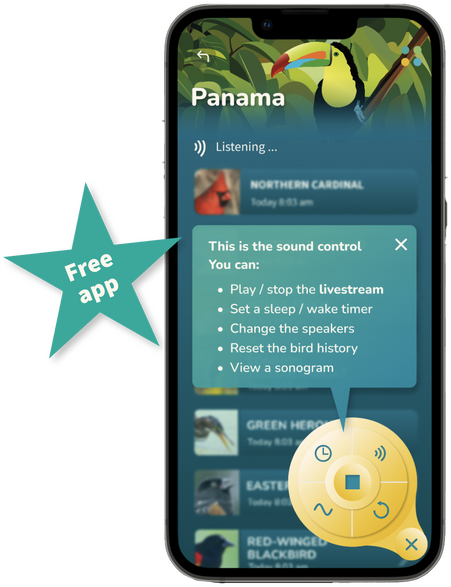
Bird Migration
The Case of the Sleeping Swallow
Quick Facts
Listen- Scientific name: Grus canadensis
- Mass: 3.2 - 5.2 kg Encyclopedia of Life
- Family: Gruidae
- Kingdom: Animalia
- Order: Gruiformes
- Migration Patterns: Text goes here
- Food: Text goes here
- Male vs Female: Text goes here
Today we take it for granted that birds migrate — maybe we don’t know where, but we know it’s a fact. Until the past couple of hundred years, though, migration was not a given. In fact, for most of history migration was a persistent and largely unsolvable mystery, with dozens of theories that ranged from the likely to the preposterous.
Let’s take a look at some famous thoughts on migration, from Ancient Greece to old Harvard. We’ll focus on the Barn Swallow, a worldwide species that can be seen every summer in North America and Europe hunting aerial insects over water and fields. In the winter they migrate south, where their food source is more plentiful. We know that now.
Here are some ideas people had then: Actually, it’s possible that the ancients had a good sense for migration. There were theories that birds went somewhere warm in the winter, and that was sometimes born out with information from travelers to other countries, who saw their familiar birds in unfamiliar settings. Some storks, for example, migrated from Europe to the Nile, and there were reasonable accounts from travelers. But many other birds were much more mysterious. Swallows, for example, could number in the thousands in summer, but were totally absent in winter, no matter how far you traveled.
Arboreal hibernation?
Migration for such small birds seemed unlikely. How could such tiny animals go long distances? So other theories arose that made more logical sense. Aristotle, for example, thought that some birds might actually transform into other birds — redstarts into robins, for example — and then back again when the weather warmed up. This sounds strange, but actually, many birds change their plumages in season and can look quite different from winter to summer.
Aristotle was an important and influential observer of nature, and his early taxonomies of animals are the foundations of the way we organize the wild world today. But his limited geographical sphere made some observations impossible. We know now that Barn Swallows migrate to southern Africa, which was further than any Greek traveler could go.
Unlike storks, swallows seemed to just disappear. As a result, his theory for swallows was that they hibernated in tree hollows. After all, mammals hibernated and it seems only logical that birds might, too. There was no real evidence, of course, but ask yourself: have you ever seen a small bird sleeping? We see them out feeding and flying around, but if they’re still and quiet, they can be almost impossible to find. So maybe hibernation wasn’t so odd, after all. Sadly, that theory proved fatal to some unlucky swallows when some early naturalists tried keeping them in icehouses in the winter to induce hibernation.
Underwater winters?
Another idea was presented in 1555 by Swedish bishop Olaus Magnus which seemed to solve the lack of evidence for arboreal hibernation. He claimed to have seen fishermen bring up swallows in their nets from the muddy bottoms of lakes. Combine that with the fact that swallows are often seen dipping in water, and it seemed clear that they in fact spent their winters in watery deep. No wonder they hadn’t been found! In the late 1800s, the American ornithologist Dr. Elliot Coues listed 182 papers that suggested swallow hibernation and could not refute them on personal experience. It’s a testament to the incredible journeys that swallows and other small birds take that we were still in the dark at such a late date.
Birds migrate!
Then there was Harvard professor Charles Morton, who in 1694 proposed that the lack of hibernating swallows suggested they did in fact migrate. It was a bold and correct assumption, except for the location he suggested. Every winter, said Morton, swallows flew to the moon.
Next time you see a summer swallow soaring overhead, think about how you might solve the mystery of the Sleeping Swallow. Would you have more insight into the problem, or would you, like Aristotle, be at the mercy of your limited observation, and forced to conjecture?
Luckily, we now have technology that will help us not only understand migration but to track it in near real-time. The Terra Project will do just that, and we’re so excited that so many people are helping to make it a reality. Find out more at www.terralistens.com
Tags
Share this Article
stream birdsong from terra curated locations
Try out the Terra app!


..or receive a link to the app by email

Enjoy bird sounds from around the world from our curated locations

BACKYARD BIrDING AND CONSERVATION
Stream & identify the birds in your own backyard
Add a Terra device to your yard or garden to create your own listening location in the app
You can also help researchers with conservation efforts
Orders sent late 2023 ship spring 2024
Find out moreTerra yard sensors
Monitor your yard or garden
Terra will connect to optional sensors that track soil conditions, moisture levels, and weather around the home. Take control whether you’re home or not.
Find out more


